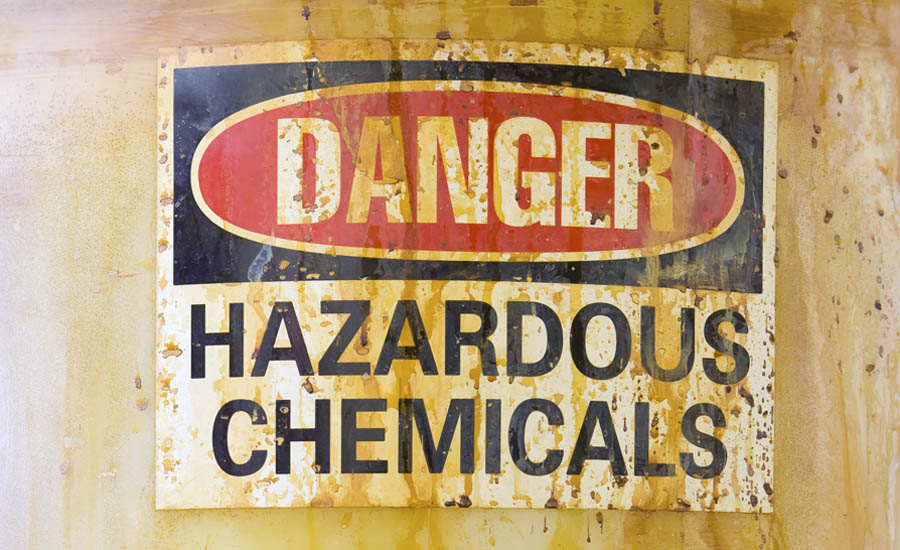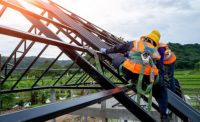Among hazardous chemicals and substances handled in industry, gases are often the most dangerous. In addition to being harder to contain than liquids or solids, many gases are invisible and odorless, forcing workers to rely on sensors and meters to detect leaks.
But surprisingly, amongst all the toxic, corrosive, and otherwise nasty gases that exist in industry, the most deadly of them all is the one we breathe in the most - nitrogen.
Nitrogen (N2) is an inert and invisible gas that makes up about 78% (by volume) of the air we breathe. The lungs don't absorb any of it, and it comes right back out when we exhale along with carbon dioxide (CO2). No interactions, no suffocation, no problems.
Nitrogen Asphyxiation
Things get dangerous fast when nitrogen concentration rises and oxygen levels fall in a closed environment. It only takes about a 2% dip from normal oxygen levels to create a breathing environment that is fatal within a short period of time. Victims of nitrogen-rich environments often don't know what's wrong until it's too late, because normal breathing is still taking place; carbon dioxide is still being released, so the buildup which causes suffocation doesn't happen.
The incident, termed “nitrogen asphyxiation,” results in a lack of oxygen which impairs judgment, coordination, and the ability to exert strength. In extreme cases, even just one breath can result in unconsciousness.
How prevalent is the nitrogen problem? Accidents involving nitrogen asphyxiation cause nearly 8 deaths per year in the U.S. The CSB (U.S. Chemical Safety and Hazard Investigation Board) reports that between 1992-2002, 85 incidents occurred, resulting in 80 deaths and 50 injuries. Of these, perhaps one of the most tragic was an accident at a Valero Refinery in Delaware City, Delaware.
The fatal Valero asphyxiation incident
On the night of November 5, 2005, a pipe elbow had been removed on the top of a hydrocracker that was shut-down for maintenance. Nitrogen had flowed into the reactor and exited from the covered opening, which was marked with a "Danger: Confined Space" sign but had no signs for nitrogen hazards. Nitrogen dangers in the report for the installation crew had been marked N/A.
Down in the opening, workers noticed a roll of duct tape in the reactor, which needed to be removed in order for work to continue. However, entering the reactor to remove it would require obtaining a special crew and permit, which would cost a lot of time and money. This was inconvenient considering the reinstallation was scheduled to be completed that night, and a crane needed for the operation had just become available for that short window of time.
In an attempt to save time, a worker tried retrieving the tape with a long wire, but failed. There are two plausible scenarios of what happened next: either the worker got close to the edge of the reactor hole, or he decided to climb down into it. In either case, in an attempt to retrieve the duct tape the worker ended up breathing in oxygen-deprived air and quickly collapsed down inside the reactor.
An eyewitness saw that the foreman and a contractor were peering down the hole when the first worker collapsed. The foreman quickly grabbed a ladder, inserted it into the hole, and climbed down to attempt a rescue. He too collapsed inside the reactor. The contractor then quickly declared an emergency on his radio.
Over 10 minutes since the first victim collapsed, emergency crews had responded and found the oxygen levels within the hole to be below 1%. Using breathing apparatuses and harnesses, they retrieved the workers from the reactor, but attempts to revive them were unsuccessful. It was later estimated that the men died around 3 minutes after falling unconscious within the reactor.
Lessons learned
In an investigation of the incident, the CSB determined that current industry safety guidelines, company training programs, and OSHA standards were not enough to adequately warn workers about the dangers of low-oxygen hazards. Properly informed and trained workers would know not to enter such confined spaces without safety equipment such as oxygen level meters to detect O2-deficient environments. They would also know not to attempt a rescue of a fellow worker without essential breathing equipment or first purging the area of the harmful gases.
As always, industry should strive for safety as a number one priority in any potentially dangerous work environment. Nitrogen-related accidents like that at the Valero refinery can be prevented through proper safety equipment, thorough reporting, adequate warning signs, and sufficient training in the workplace.
Source: https://cr4.globalspec.com

